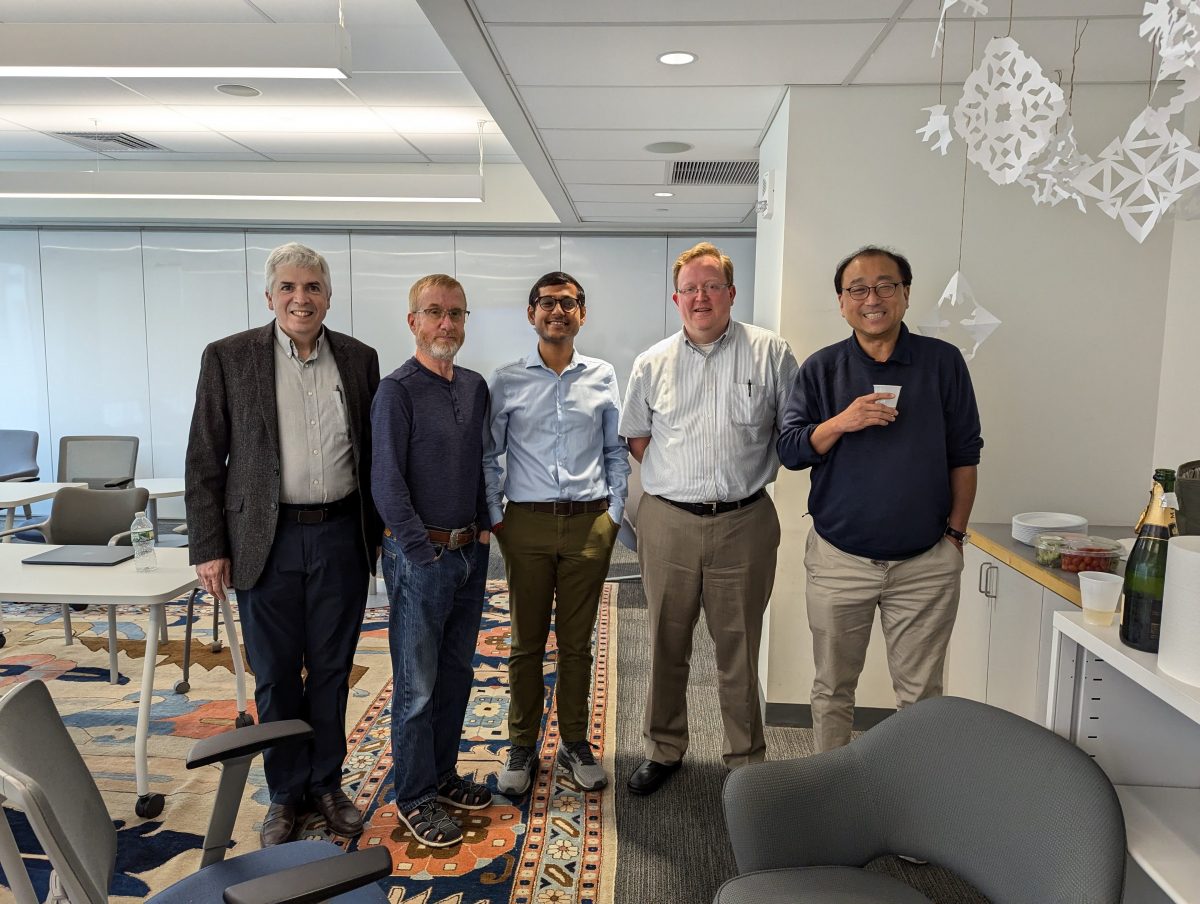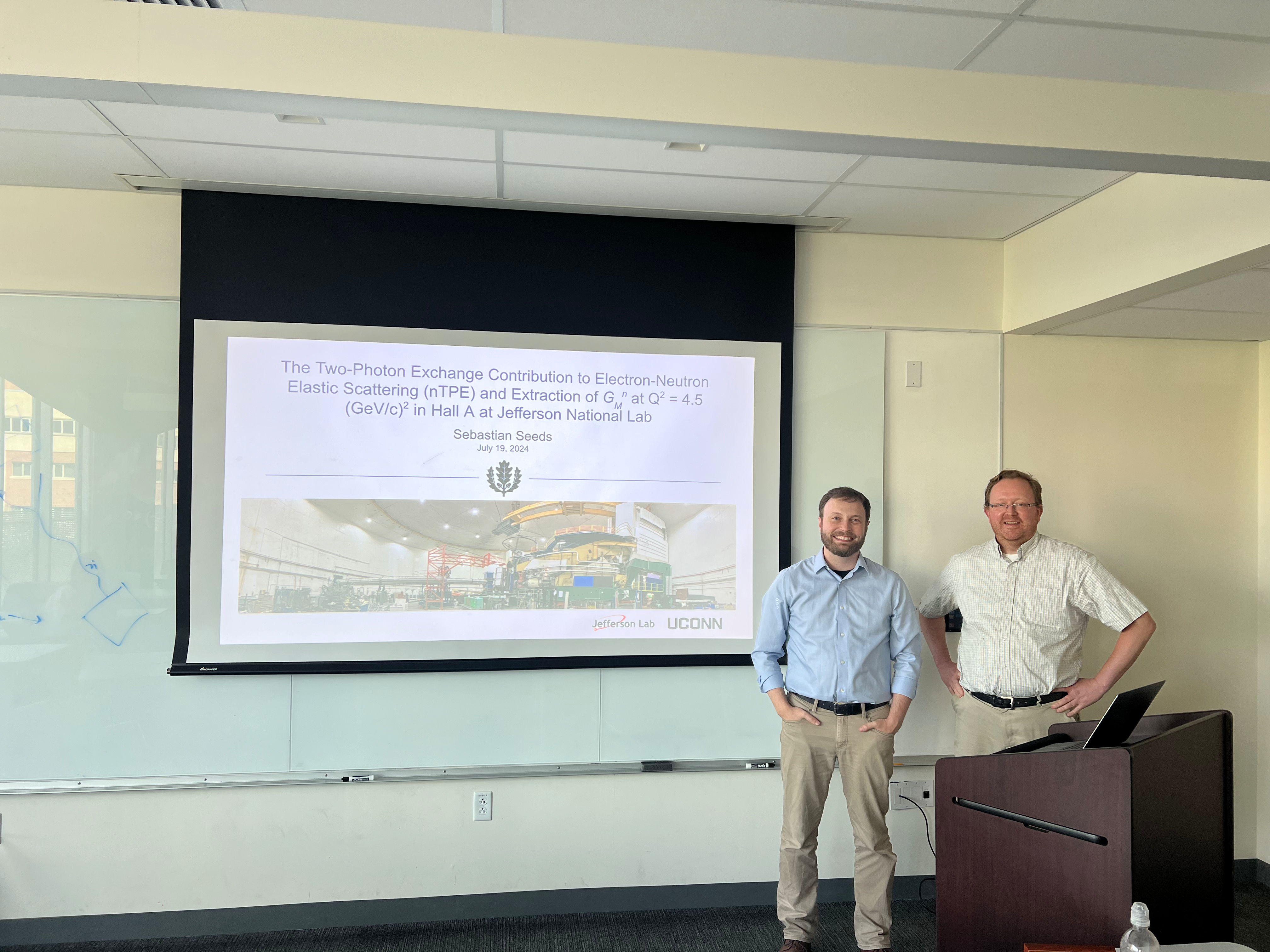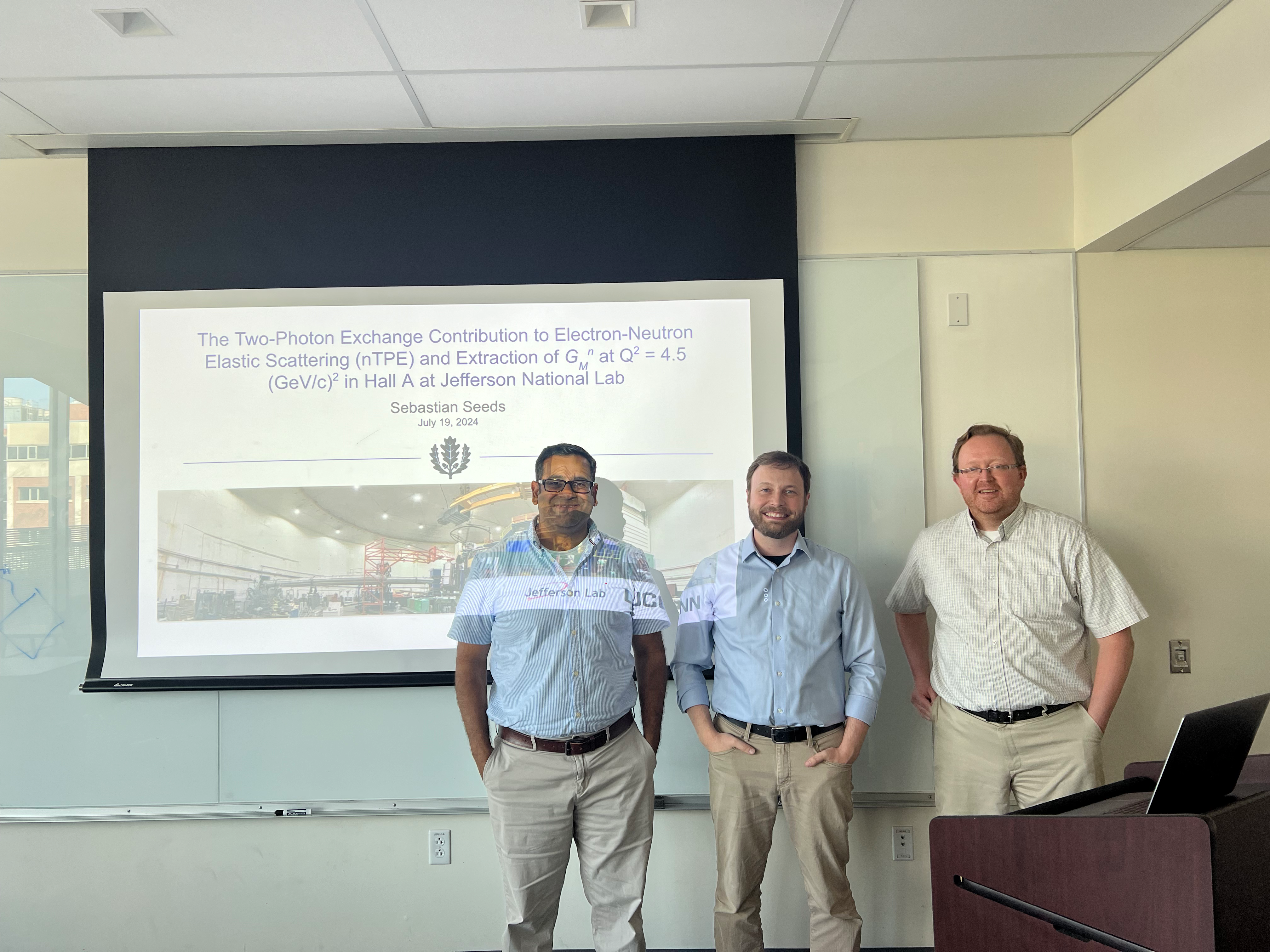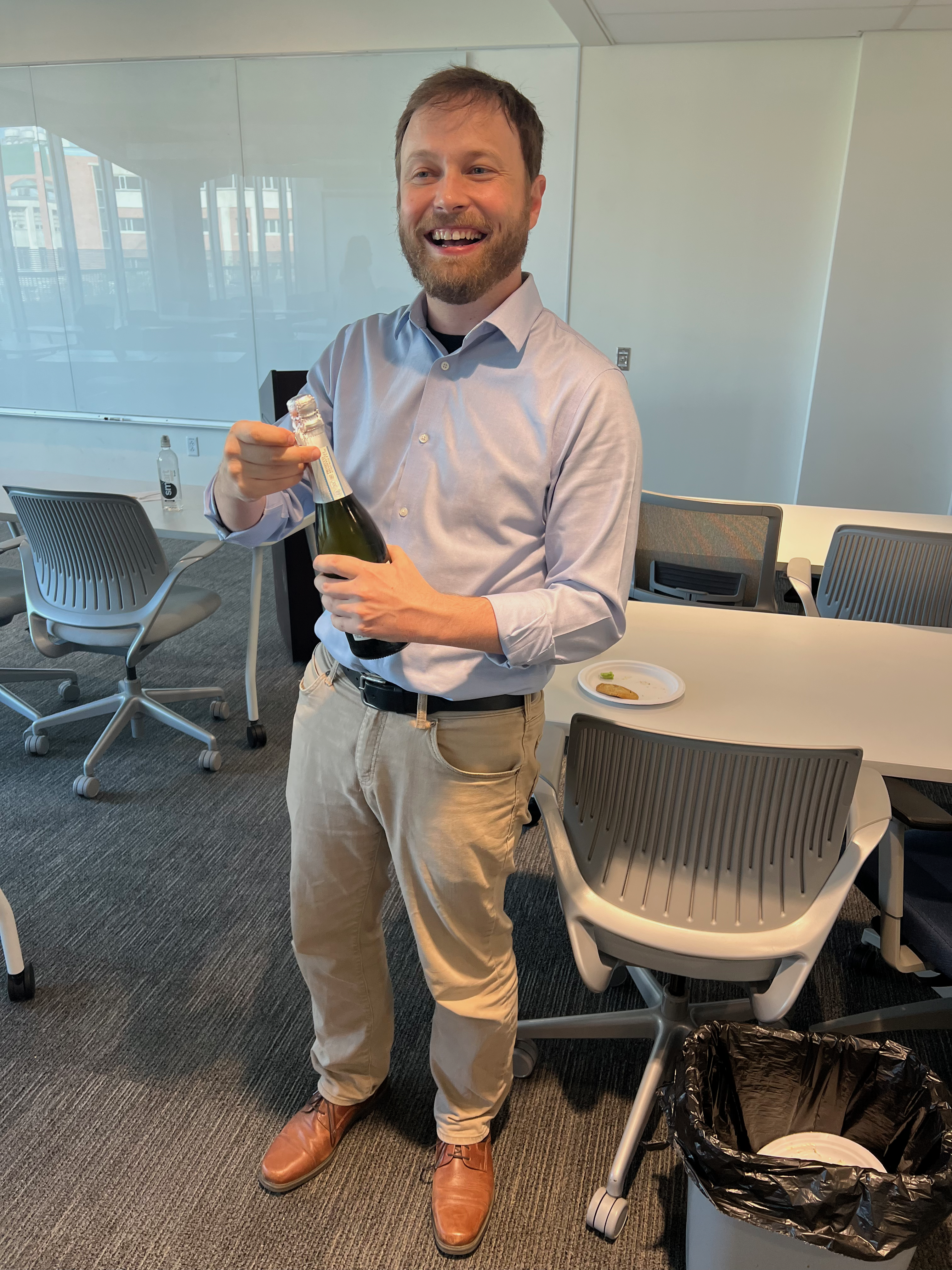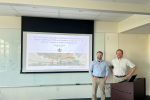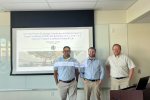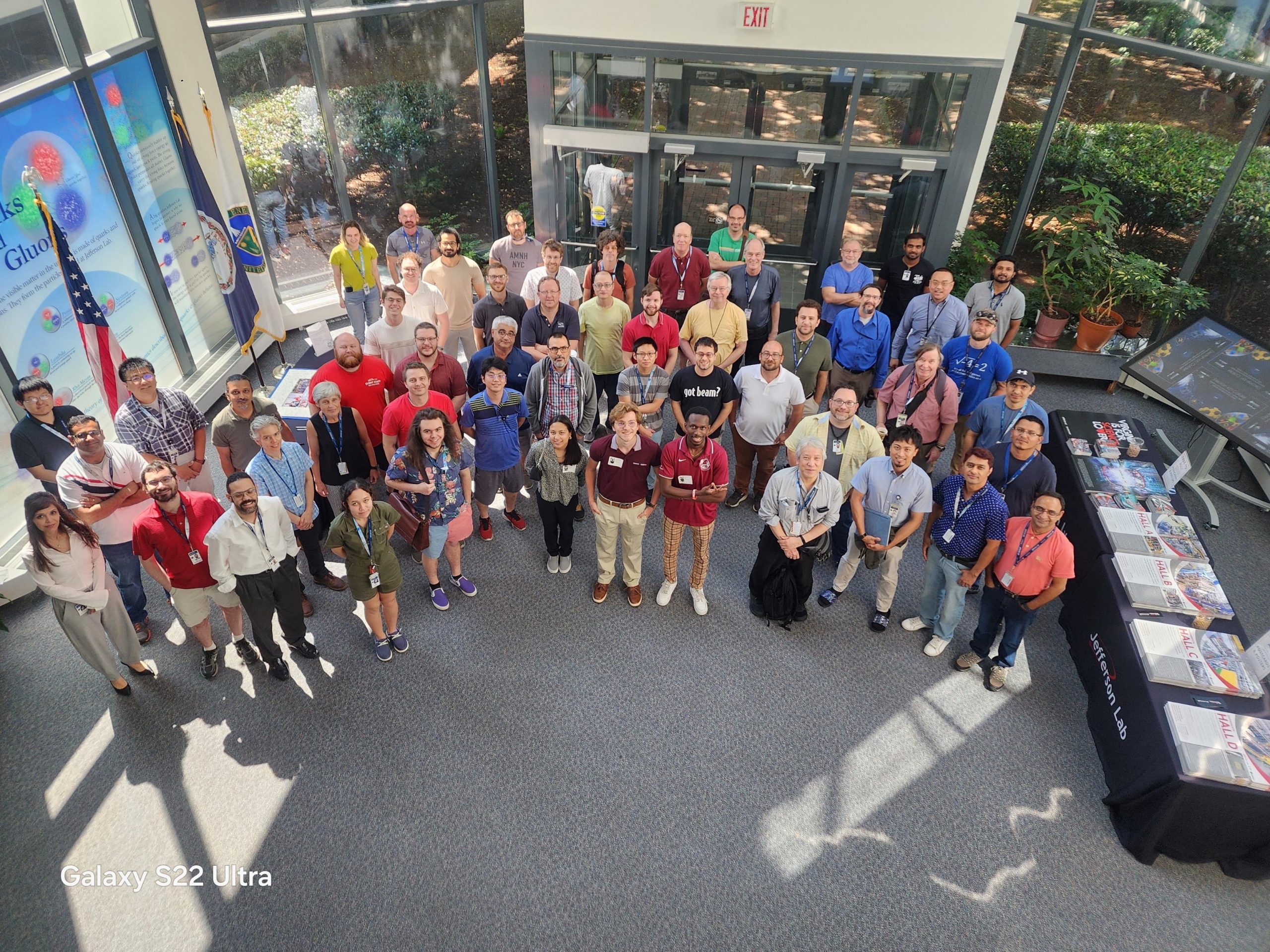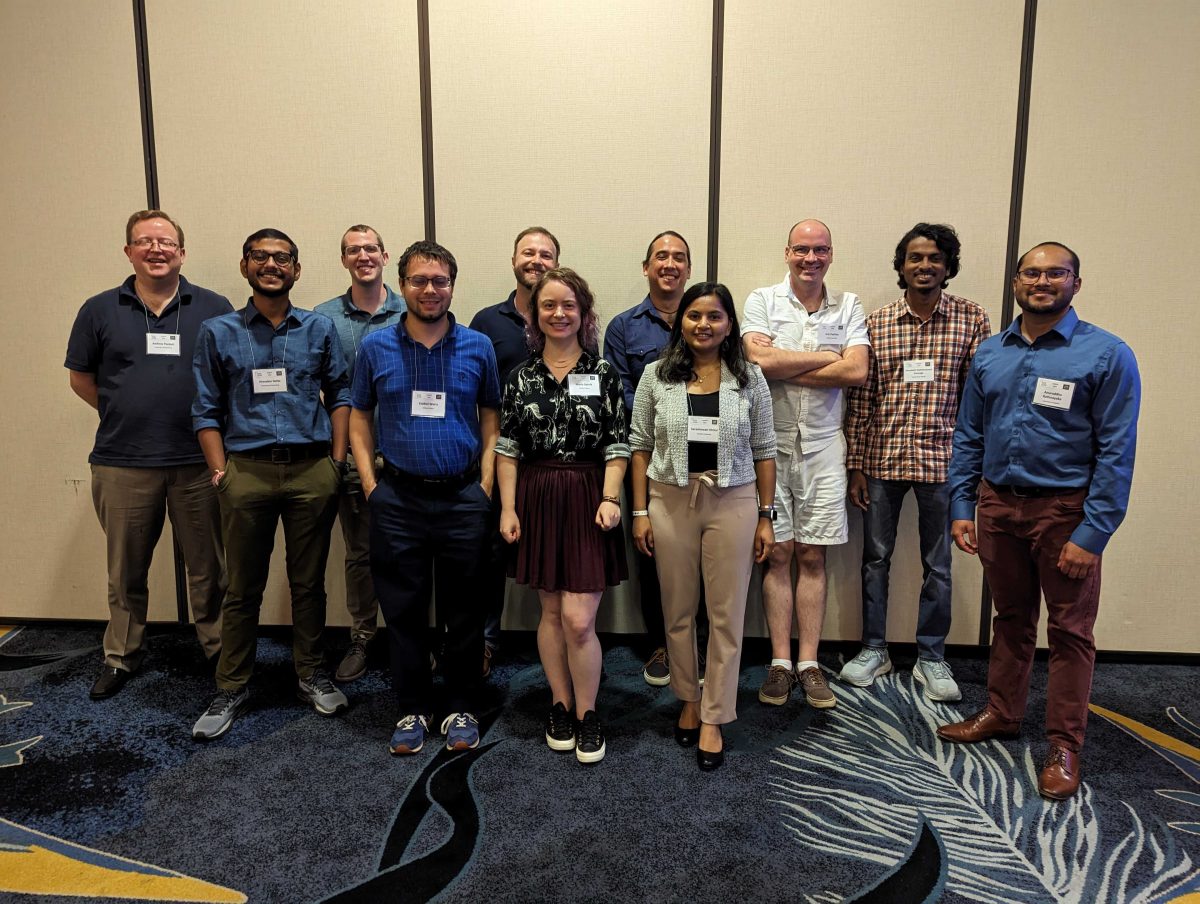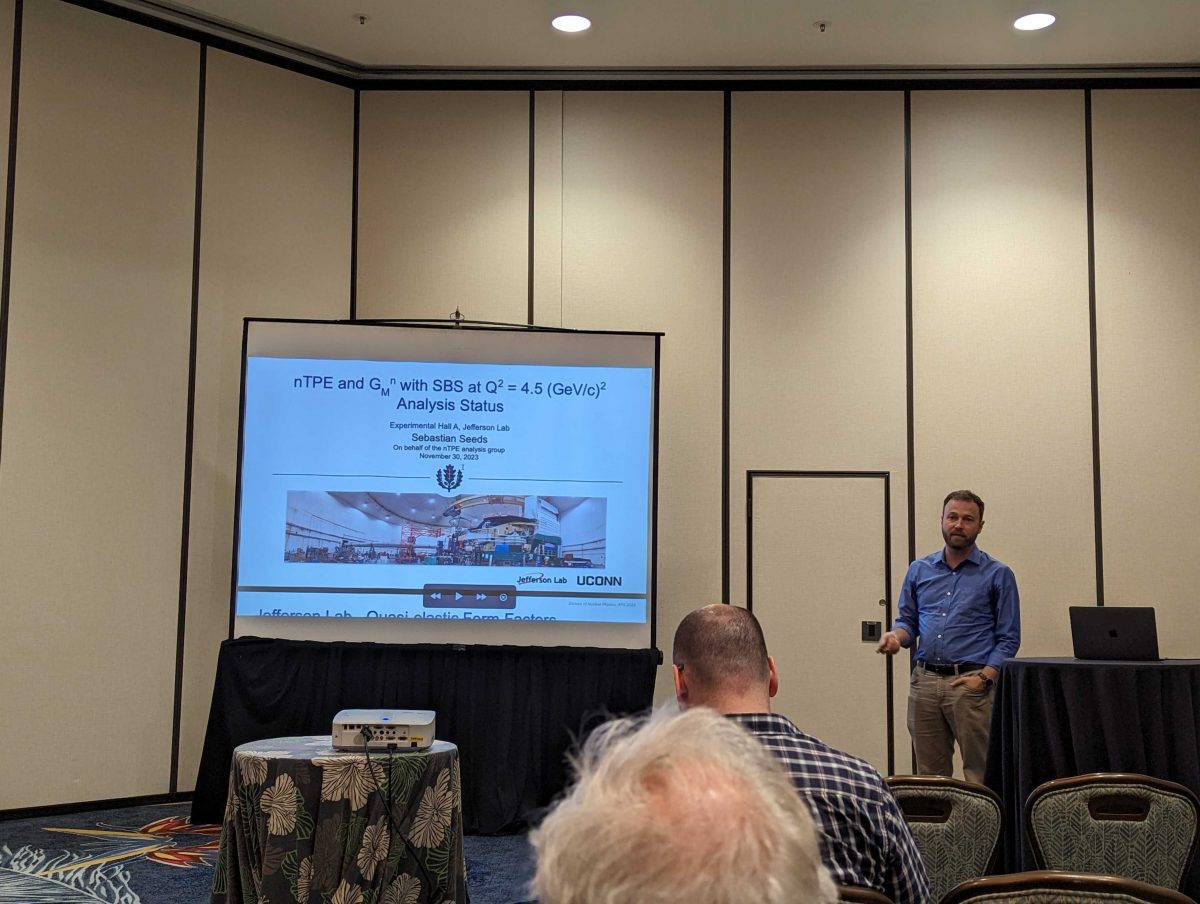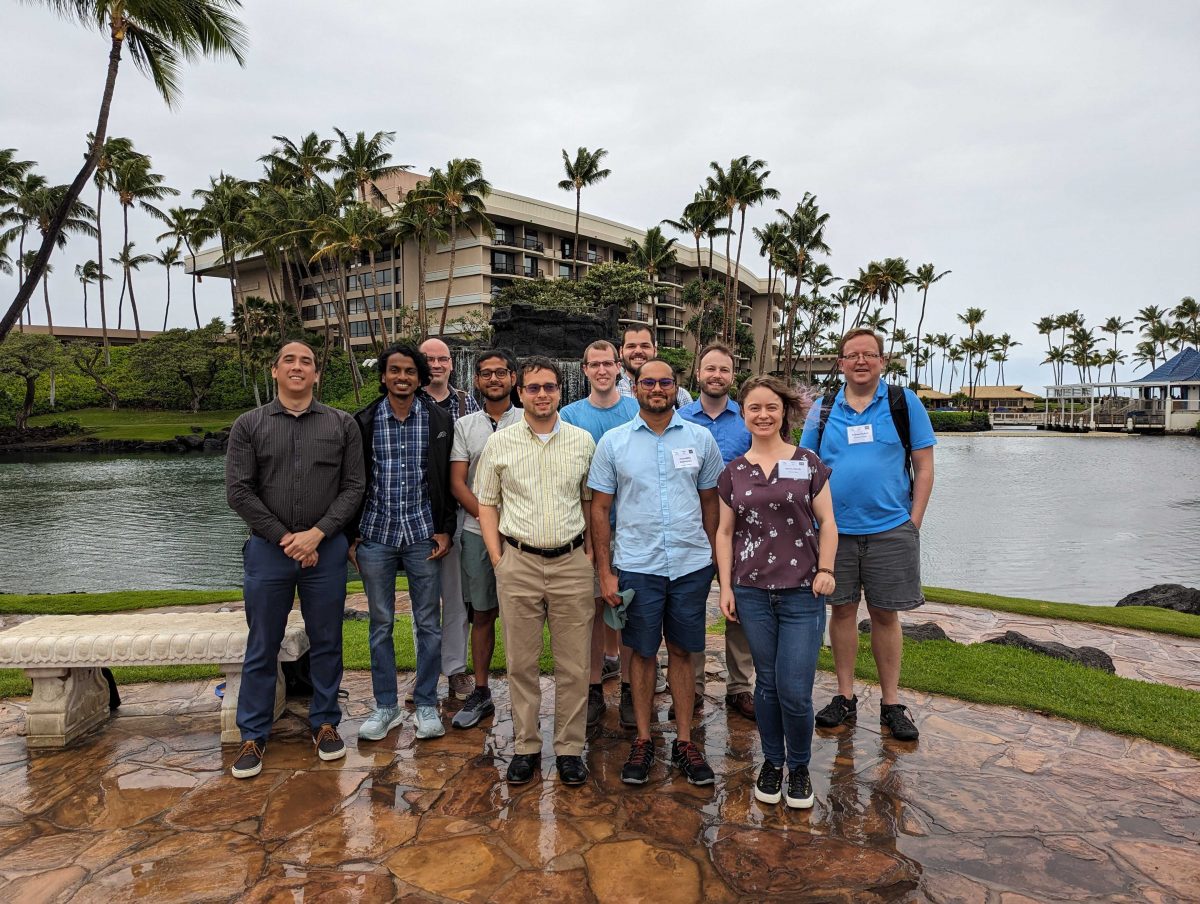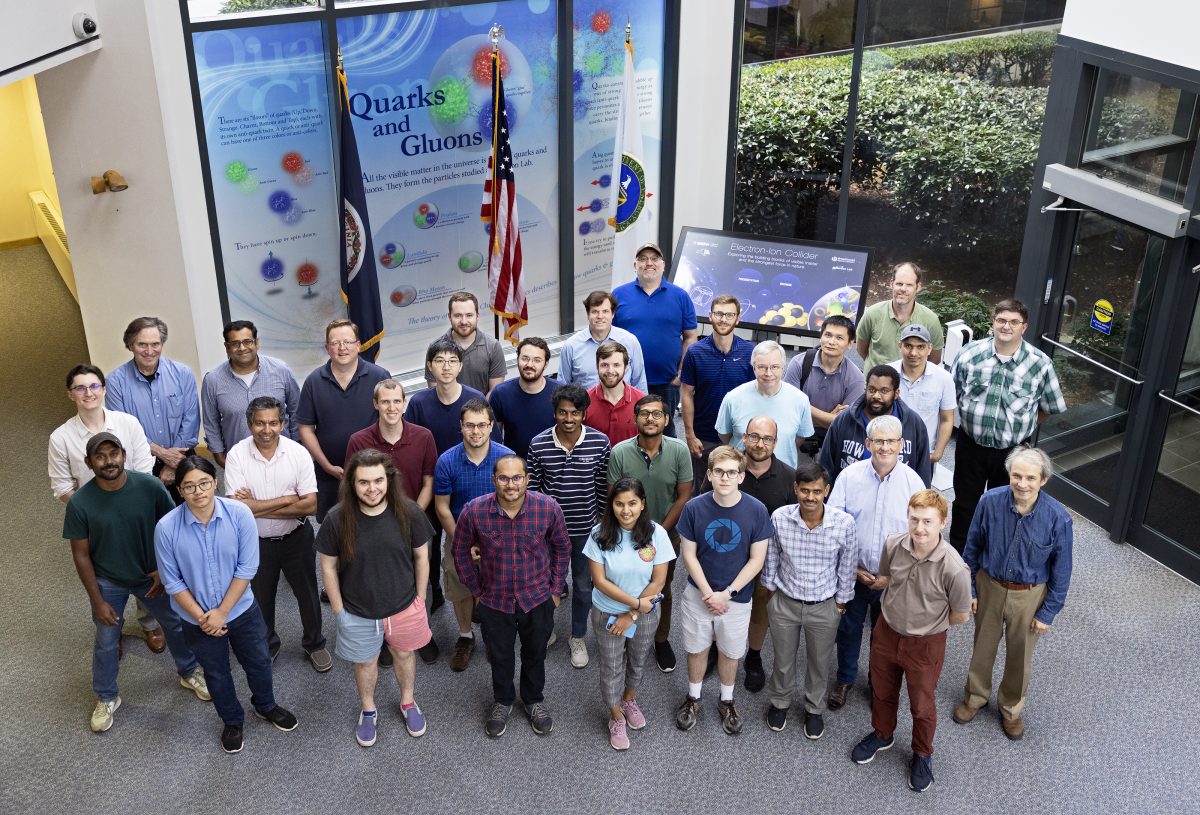Professor Puckett traveled to Jefferson Lab in July 2024 to defend an experiment proposal developed with Professors Jan Bernauer of Stony Brook University and Axel Schmidt of George Washington University at the 52nd meeting of Jefferson Lab’s Program Advisory Committee (PAC52). PAC52 approved the proposal with an “A-” scientific rating. The proposal was to add a short (two days of beam time), opportunistic, high-precision measurement to the upcoming experiment E12-07-109 in Hall A at JLab (of which Professor Puckett is also a co-spokesperson). This short “add-on” measurement to an upcoming experiment would improve the precision of the polarization transfer data for the proton form factor ratio as measured in electron-proton scattering by a factor of four at a squared four-momentum transfer of 3.7 GeV2. This improvement is necessary to enable a precise comparison to a planned future measurement using positron beams at the same or similar momentum transfer, aimed at resolving the long-standing discrepancy between cross section and polarization measurements in the determination of the proton’s form factor ratio. The precision goals are driven by the expected magnitude of two-photon-exchange contributions widely thought to be responsible for the discrepancy.
The experiment proposal as submitted to PAC52 can be found here.
Professor Puckett’s presentation to PAC52 can be found here.
The figure below shows the approved measurement compared to existing data and a planned future positron measurement at the same Q2:
